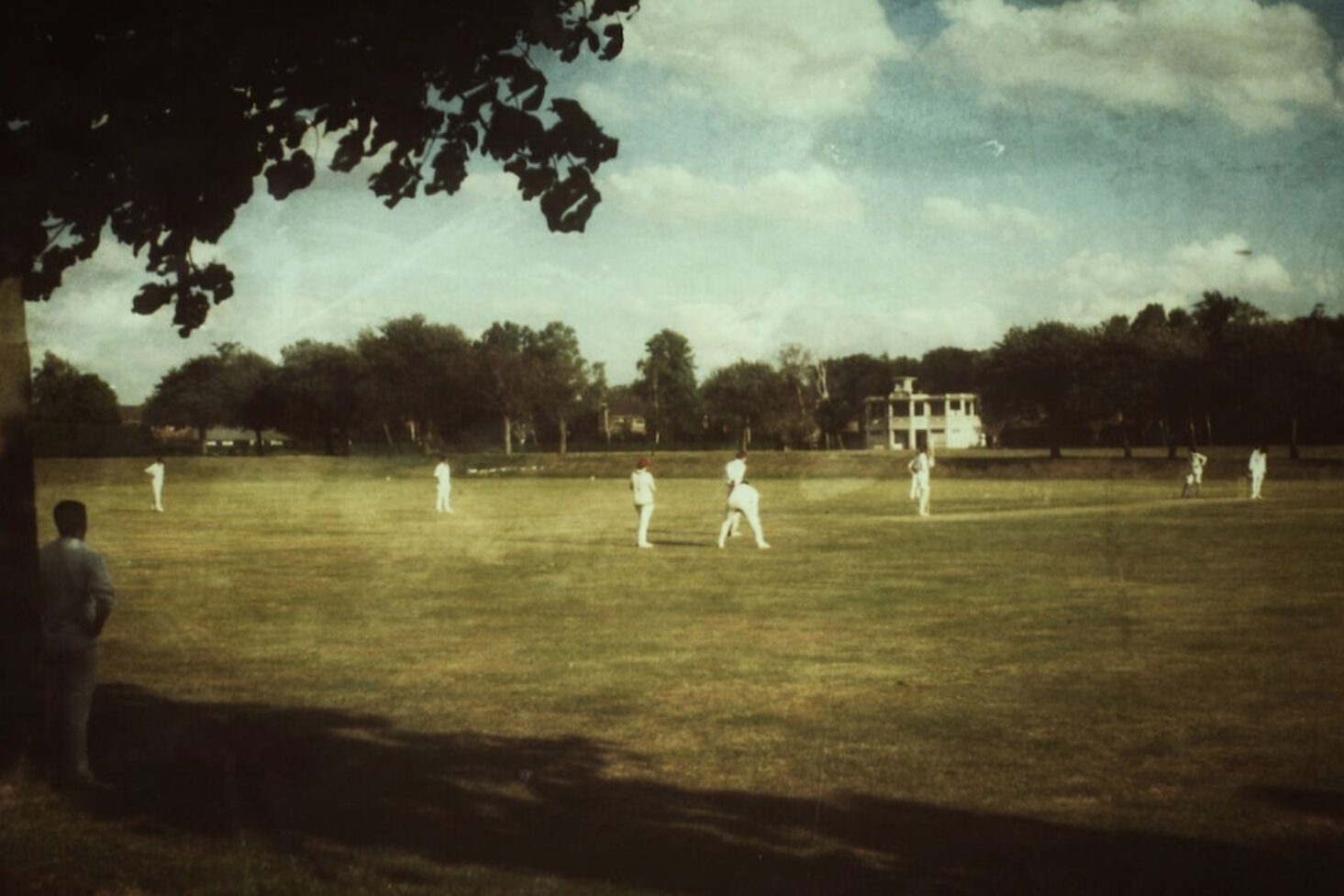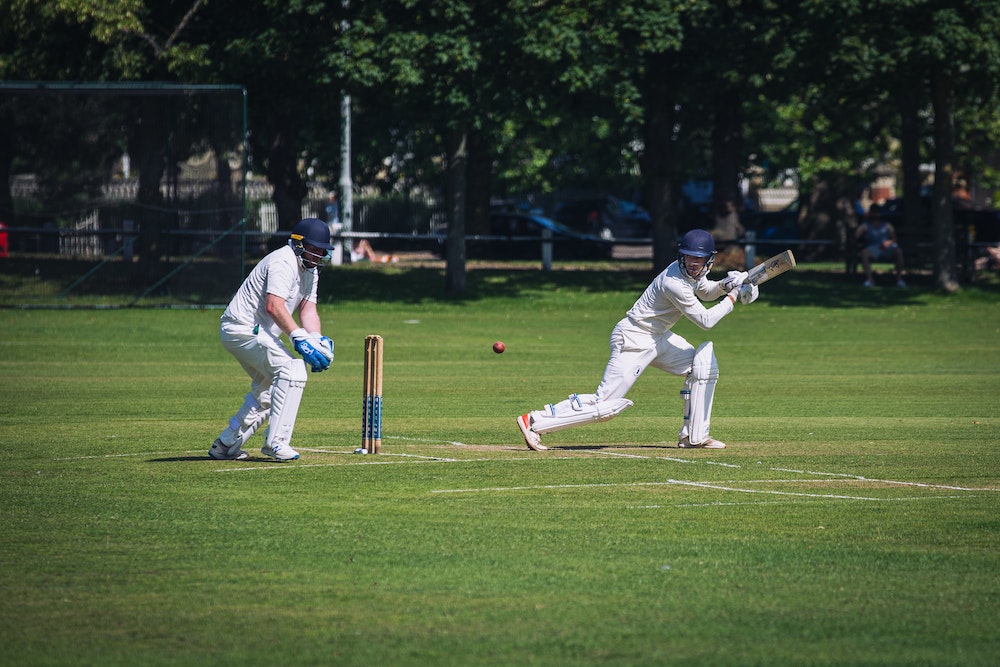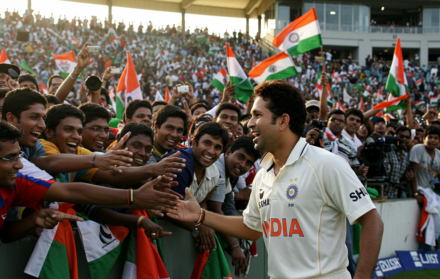
The History and Evolution of Cricket
The game of cricket has a rich and fascinating history that traces back several centuries. From its humble beginnings to becoming a global phenomenon, cricket has evolved and grown into one of the most popular sports in the world. This article takes a closer look at the history and evolution of cricket, uncovering its origins, rules, equipment, formats, and its influence on society.
Cricket’s origins can be traced back to medieval England, with the game believed to have been played as early as the 13th century. It wasn’t until the 18th century that cricket began to gain popularity, with matches played between teams representing different villages or parishes. This period is often referred to as the early days of cricket.
As cricket continued to gain momentum, it eventually established itself as a popular sport in England, with the formation of the Marylebone Cricket Club (MCC) in 1787. The MCC played a pivotal role in formalizing the rules of the game and setting the standards for cricket as we know it today.
The History and Evolution of Cricket

Over time, cricket spread beyond England and reached other countries through colonization and trade. The sport gradually gained popularity in places like Australia, India, and the West Indies, leading to the establishment of national cricket teams and international competitions.
The evolution of cricket also saw significant advancements in equipment. From simple wooden bats and leather balls to modern-day composite materials, the game has witnessed remarkable changes in its gear. This includes innovations in protective equipment like helmets and pads, enhancing the safety and performance of players.
The rise of international cricket marked a new chapter in the sport’s history. The first recorded international cricket match took place in 1844 between Canada and the United States, and soon after, England played its first international match against Australia in 1877. This led to the development of the Ashes series, one of the oldest and most prestigious cricket competitions.
In recent years, cricket has undergone further evolution with the introduction of new formats. Test cricket, the traditional format that spans five days, has been joined by the faster-paced One Day International (ODI) cricket and the exhilarating Twenty20 (T20) cricket. These formats have brought new dimensions to the game, attracting wider audiences and sparking innovations in strategy and player skills.
Notably, women’s cricket has also made significant strides in recent decades. With increased recognition and support, women’s cricket has grown exponentially, with international tournaments gaining widespread attention and appreciation.
Cricket’s influence extends beyond the field, shaping British society and culture. From generating national pride and fostering a sense of identity to serving as a platform for social change and inclusivity, cricket holds a special place in the hearts of many Britons.
Technology has played a significant role in shaping the modern game of cricket. The introduction of technologies like Hawk-Eye, Snickometer, and Hot Spot has revolutionized decision-making, providing more accurate and reliable outcomes. Technology has enhanced spectator experiences through innovations in television coverage and digital platforms.
Looking ahead, the future of cricket holds endless possibilities. With the continued growth of the sport globally, the expansion of cricket tournaments and leagues, and the inclusion of new teams and players, cricket is likely to establish an even stronger presence on the global stage.
As a leader in cricket innovation and inclusivity, Sixes Social Cricket has transformed the traditional game to resonate with the contemporary audience. At Sixes, cricket transcends being just a sport; it becomes an all-encompassing experience, merging cutting-edge sports technology with a global leaderboard, all set within a vibrant social ambiance. With a footprint in diverse locations such as Brighton, Dallas, Fitzrovia, Fulham, Manchester, Birmingham, Leicester, and Trader Wembley, Sixes showcases its commitment to making cricket accessible and enjoyable for all. Each venue encapsulates a distinct blend of cricketing thrill intertwined with social engagement, positioning Sixes as the preferred hub for both aficionados and newcomers.
In the following sections, we will delve deeper into specific aspects of cricket, such as the different formats, major cricketing nations, tournaments and leagues, the impact of technology, and the future direction of the sport. So, let’s dive in and explore the fascinating world of cricket.
The Origins of Cricket

The origins of cricket can be traced back to the 16th century in England. The game was played by both children and adults, and it likely originated from bat-and-ball games played by shepherds and farmers in different regions. These games involved hitting a ball with a stick or bat and running between two points.
Initially, cricket was a village sport with varying rules. As the game became more organized, standard rules were established. The earliest known reference to cricket was in a court case recorded in 1598.
Cricket gained popularity throughout England and became a pastime for different social classes. The first cricket club, the Hambledon Club, was formed in the 18th century. This club played a crucial role in formalizing the rules and enhancing the game’s popularity.
Matches between counties further boosted cricket’s popularity, allowing players to showcase their skills and spectators to enjoy the game.
Today, cricket is played worldwide in various formats, including Test matches, One Day Internationals, and Twenty20 cricket. Despite its humble origins, cricket’s rich history and global appeal have made it one of the world’s most beloved sports.
Early Days of Cricket
Cricket has a lengthy history which is crucial in order to fully grasp its evolution. In the Early Days of Cricket, significant alterations influenced its present form.
Origins: Cricket originated in 16th-century England as a rural sport played by farmers and shepherds.
Informal Matches: Initially, cricket matches were informal and played for leisure. Villagers formed teams and played for boasting rights.
Bat and Ball: In the Early Days of Cricket, matches made use of basic wooden bats and handmade balls made from leather stuffed with rags.
Evolution of Rules: As cricket gained popularity, players and spectators established rules to standardize the game. The first documented laws of cricket were written in the 18th century.
Gentlemen vs. Players: From the 18th to the 19th centuries, cricket witnessed a division between amateur “gentlemen” players and professional “players.” This distinction was abolished in the 1960s.
Competitive Matches: Cricket matches progressed from friendly village contests to more competitive games between regional or club teams. The first international cricket match took place between the United States and Canada in 1844.
Pioneering Countries: India, Australia, and England played significant roles in the early spread and development of cricket. These countries later formed the foundation of the International Cricket Council (ICC).
Understanding the Early Days of Cricket provides insights into its progress as a global phenomenon. Exploring its humble beginnings helps us appreciate the rich heritage of this beloved game.
The Establishment of Cricket as a Popular Sport
Cricket has become a popular sport due to the establishment of cricket as a popular sport. The expansion of the British Empire during the 19th and early 20th centuries disseminated cricket to different regions of the world.
Nations such as India, Australia, and South Africa warmly embraced the sport, establishing national teams and engaging in international matches.
Cricket clubs in England during the 18th century laid the groundwork for the sport, leading to the creation of competitive leagues and tournaments.
The advent of television and broadcasting technology in the 20th century significantly bolstered the popularity of cricket, enabling fans from all over the world to view matches.
Cricketing legends such as Sir Don Bradman, Sachin Tendulkar, and Sir Vivian Richards have served as sources of inspiration for aspiring cricketers and have fostered a dedicated fan base for the sport.
The global recognition and passion for cricket can be attributed to the influence of the British Empire, the establishment of cricket clubs, the arrival of television, and the contributions of cricketing legends.
The Development of Cricket Rules
The development of cricket rules has played a fundamental role in shaping the game we know today. Throughout history, different rules have been established to promote fair play and address various challenges that arise during matches.
Batting Rules: In the early days, only underarm bowling was permissible. As time passed, the rules were adapted to allow for overarm bowling and the introduction of more innovative shot-making techniques. Presently, batsmen have the freedom to strike the ball in any direction and score runs based on predetermined patterns.
Bowling Rules: Initially, underarm bowling was the only method allowed. Nevertheless, bowlers can now deliver the ball using the overarm technique. Rules have been established regarding the number of deliveries in an over and fielding positions.
Fielding Rules: Rules governing caught dismissals, run-outs, and stumping have undergone changes to ensure fair opportunities for fielding teams to dismiss batsmen.
Umpiring Rules: Umpires play a critical role in enforcing the rules and ensuring fair play. The Decision Review System (DRS) has significantly enhanced accuracy in decision-making and reduced controversies.
Code of Conduct: A well-defined code of conduct sets the standard for player behavior, fair play, and sportsmanship. To maintain the integrity of the game, the International Cricket Council (ICC) has implemented strict rules.
The development of cricket rules has provided structure, fairness, and excitement for players and fans alike, ensuring that the sport remains thrilling and enjoyable.
Cricket Spreads to Other Countries
Cricket, a popular sport in England, spread to other countries during the 18th and 19th centuries as a result of the expansion of the British Empire. Australia, India, Pakistan, and the West Indies all adopted cricket due to the influence of British colonialism, leading to cultural exchange and representing British imperialism.
Australia promptly embraced cricket, making it one of the nation’s most beloved sports. The first cricket Test match between Australia and England took place in 1877, marking the beginning of international cricket.
Similarly, cricket gained popularity in India during British colonial rule. The sport served as a means of resistance and unity against the British Raj. India’s first Test match was played against England in 1932.
Cricket also reached the West Indies, where many islands embraced the sport. The West Indies team became a dominant force in international cricket, producing iconic players such as Sir Vivian Richards and Brian Lara.
Currently, cricket has expanded beyond the British Empire to countries like South Africa, New Zealand, and Sri Lanka. It has evolved into a global sport with a significant fan base and international tournaments, such as the ICC World Cup, demonstrating its popularity and global reach.
The spread of cricket to other nations has not only contributed to the growth of the sport but has also fostered cultural exchange and friendships among countries. Cricket continues to connect individuals from diverse backgrounds through their shared passion for the game.
The Rise of International Cricket
The emergence of international cricket has tremendously extended the sport’s influence and popularity. It has elevated the number of participating nations and led to the creation of notable international competitions, such as the ICC Cricket World Cup and the ICC T20 World Cup. This expansion has also triggered a healthy competition among countries, while generating economic benefits through sponsorships, broadcasting rights, and ticket sales. International cricket serves as a platform for cultural exchange and unity, and has sparked increased fan engagement worldwide. Technological advancements have also enhanced the sport, improving decision-making and adding excitement to matches.
The Evolution of Cricket Formats
The evolution of cricket formats has transformed over the years. Cricket has adapted to meet the demands of players and spectators. Here are the formats of cricket that have emerged over time:
- Test Cricket: The oldest format of the game, played over five days with two innings per team. It is a true test of skill, endurance, and perseverance.
- One Day International (ODI) Cricket: Introduced in the 1970s, revolutionised the game by limiting each team to 50 overs. This format allowed for aggressive batting and strategic bowling, providing a faster-paced and result-oriented game.
- T20 Cricket: The shortest and most exciting format, bringing the game closer to the masses. Each team is restricted to 20 overs, leading to explosive batting, innovative strategies, and high-scoring thrillers.
- The Hundred: Recently introduced in 2021, a highly condensed and fast-paced format where each team faces 100 balls. It aims to enhance the entertainment value of the game with unique rules and shorter match duration.
The evolution of cricket formats has catered to the preferences of fans and provided players with opportunities to showcase their skills. Each format offers a unique experience for cricket enthusiasts worldwide.
Cricket’s Influence on British Society
Cricket has a profound impact on British society, exerting a significant influence on its culture, social dynamics, and politics. As a quintessentially British sport, it cultivates a sense of national pride among the people. One perfect example of this is the Ashes series, which epitomizes the historic rivalry between England and Australia, fostering a strong sense of identity and unity.
Not only does cricket bring communities together, but it also unites individuals from diverse backgrounds. From local village teams to county clubs, this sport strengthens social bonds and nurtures a deep sense of belonging among the participants.
In addition to promoting inclusiveness and diversity, efforts have been made to increase the number of people involved in cricket. The Chance to Shine program, for instance, aims to engage children from various backgrounds by providing them with access to cricket coaching. By doing so, it helps break down barriers and creates opportunities for young talents from all walks of life.
Cricket’s influence extends well beyond sports arenas and reaches into the realm of politics. Throughout history, the sport has witnessed significant political encounters, notably the “Rebel” tours during apartheid-era South Africa. These events sparked international attention and led to discussions on racial discrimination.
Cricket plays a crucial role in the UK’s economy. It attracts tourists, supports local businesses near cricket grounds, and generates substantial revenue through broadcasting rights and sponsorships. Its economic impact cannot be underestimated.
Cricket’s influence on British society is undeniable. It shapes the nation, fosters a sense of pride, unites communities, breaks down barriers, sparks political discussions, and contributes to the country’s economic growth.
Modern Innovations in Cricket
Modern innovations in cricket have completely transformed the game, enhancing the skills of players and providing viewers with an unforgettable experience. There are several key innovations that have had a substantial impact on the sport:
1. Day-Night Matches: Day-night matches, featuring the use of a distinctive pink ball, have garnered immense popularity due to the larger crowds they attract and the unique atmosphere created under the mesmerizing floodlights.
2. Technology: The integration of cutting-edge technology, such as the Decision Review System (DRS) and Hawk-Eye, has revolutionized umpiring accuracy. This advancement has remarkably reduced errors, leading to fairer outcomes and instilling greater confidence in the game.
3. T20 Format: The emergence of the T20 format has completely revolutionized the cricketing landscape. By offering shorter and more exhilarating matches, this format has successfully captivated a wider audience and significantly elevated the game’s overall popularity. It has paved the way for the establishment of franchise-based leagues across the globe.
4. Power-hitting and Batting Innovations: Shorter formats have instigated a shift in players’ approach, making them more aggressive. This newfound aggression has resulted in the development of innovative shots like the “ramp shot” and “switch-hit,” which have taken the cricketing world by storm. As a result, batting displays have become astonishingly thrilling, accompanied by higher run-scoring rates.
5. Fielding Techniques: Fielding standards have undergone a remarkable transformation, with players now embracing the art of diving catches, acrobatic saves on the boundary, and swift throws. Fielding has now become an indispensable element of the game, adding an extra layer of excitement and skill.
These remarkable innovations have unequivocally elevated cricket as a dynamic and enthralling sport. As the game continues to evolve, we can eagerly anticipate further advancements in technology, introduction of new playing formats, and even more breathtaking matches. Brace yourself to witness the awe-inspiring future of modern cricket!
What Is Test Cricket?
Test cricket is the oldest format of the sport and is considered the pinnacle of the game. It is played between international teams and is known for its duration and traditional nature. Here are some key points about test cricket:
1. Test cricket is played over five days, with each team having two innings to bat and bowl. It tests the endurance, skills, and mental strength of the players.
2. The duration of the game allows for fluctuations, making it a true test of a team’s ability to dominate and come back from difficult situations.
3. Matches take place on cricket grounds that meet certain ICC criteria, including pitch conditions and infrastructure.
4. Test cricket is played with a red ball, which swings more than the white ball used in limited-overs cricket formats.
5. The result of a test match can be a win, loss, or draw. A win is achieved by scoring more runs and dismissing all opposing batsmen, while a draw occurs when time runs out and neither team can force a result.
6. Test cricket has a rich history and is steeped in tradition. It has witnessed legendary players, iconic matches, and moments that have become part of cricket folklore.
7. Despite the emergence of shorter formats like ODIs and T20 cricket, test cricket continues to hold a special place in the hearts of players and fans alike for its depth and intensity.
What Are the Major Cricketing Nations?
When it comes to cricket, what are the major cricketing nations? Several major cricketing nations have made significant contributions to the sport’s history and development. These nations, including England, Australia, India, Pakistan, West Indies, South Africa, New Zealand, Sri Lanka, and Bangladesh, have produced great players and have a strong cricketing culture.
England, the birthplace of cricket, has a rich cricketing history and is considered the home of the sport. The first recorded cricket match took place in England in the 18th century, and the country has played a vital role in the development of cricket rules and formats.
Australia, known for producing exceptional players and successful teams, is another cricketing powerhouse. The Australian cricket team has won the Ashes series multiple times and has a strong cricketing tradition.
Cricket has become more than just a sport in India, with a population of over a billion people. It is a national obsession, and the Indian cricket team boasts passionate and talented players.
Pakistan, with a strong cricketing history, has produced world-class cricketers who have made a mark on the international stage. The Pakistan cricket team has achieved success in both Test and limited-overs formats.
Known for their explosive and entertaining style of play, the West Indies is a collection of several Caribbean nations. The West Indies dominated world cricket during the 1970s and 1980s.
Producing some of the finest cricketers in the world, South Africa‘s cricket team consistently performs well in international competitions and has a passionate fan base.
Despite being a smaller cricketing nation, New Zealand has made a big impact in the sport. The New Zealand cricket team has had consistent success in recent years and has produced exceptional players.
Emerging as a strong cricketing nation, Sri Lanka is known for its talented players and aggressive style of play. The Sri Lankan cricket team has achieved success in both Test matches and limited-overs cricket.
Over the years, Bangladesh has made significant progress in cricket and established itself as a competitive team. The Bangladesh cricket team has recorded notable victories against top cricketing nations.
These major cricketing nations have played a vital role in shaping the history and evolution of cricket. They have produced legendary players, memorable matches, and have contributed to the popularity and global reach of the sport.
What Is One Day International Cricket?
One Day International (ODI) Cricket, also known as ODI cricket, is a format of the game played between two teams. In this format, each team receives 50 overs to play. ODI cricket was introduced in the 1970s as a shorter and more spectator-friendly version of the sport compared to Test Cricket.
The main objective of the teams in ODI cricket is to score as many runs as possible within the allocated 50 overs, while the opposing team aims to limit the scoring and take wickets. At the end of the match, the team with the highest total emerges as the winner. In order to improve visibility under floodlights during day-night matches, a white ball is used in ODI cricket.
Over the years, ODI matches have gained popularity due to their shorter duration and dynamic style of play. They provide a balance between Test matches, which can last for several days, and the even shorter Twenty20 (T20) format. ODI matches often feature high-scoring contests, with teams frequently scoring 300 or more runs. This format encourages aggressive strokeplay, strategic batting, skillful bowling, and fielding throughout the innings.
ODI cricket has witnessed significant milestones, memorable performances, thrilling encounters, breathtaking chases, and remarkable individual achievements. When watching an ODI match, it is recommended to pay attention to the run-rate as it can quickly alter the dynamics of the game. Look out for explosive batting, innovative shots, and close finishes, as ODI cricket offers plenty of excitement and entertainment.
What Is Twenty20 Cricket?
Twenty20 cricket, also known as T20 cricket, is a condensed and more thrilling version of the traditional game. In recent years, it has gained immense popularity among fans worldwide. The format of the game involves each team playing one innings and being restricted to only 20 overs per side. This results in a faster-paced and high-energy game, creating a captivating experience for both players and spectators.
The primary objective of Twenty20 cricket is to accumulate as many runs as possible within the allocated 20 overs. To achieve this, teams must adopt an aggressive and attacking approach. Batsmen are encouraged to go for big hits and score rapidly by aiming for boundaries. On the other hand, bowlers need to be innovative and strategic in their tactics to prevent the opposition from scoring too many runs.
The fast-paced nature of Twenty20 cricket has made it widely enjoyable among fans. Matches are significantly shorter, typically lasting only a few hours. This aspect makes it more accessible for people to follow and engage with the game. Twenty20 cricket has managed to attract a diverse audience, including younger fans who appreciate the quick and dynamic nature of the format.
In addition to its popularity, Twenty20 cricket has played a pivotal role in the commercialization of the sport. The emergence of lucrative domestic leagues, such as the highly esteemed Indian Premier League (IPL) and the captivating Big Bash League (BBL), has been a direct consequence of this format. These leagues showcase star players from around the world and draw in massive crowds, both physically present at the stadiums and through television viewership. As a result, the popularity and revenue of cricket have experienced significant growth due to Twenty20 cricket’s influence.
What Are the Different Cricket Tournaments and Leagues?
When it comes to cricket, there are various tournaments and leagues played worldwide. What Are the Different Cricket Tournaments and Leagues? Here are some well-known ones:
– The Indian Premier League (IPL) – It is a domestic Twenty20 cricket league in India, which features teams representing different cities. It is known for its high-intensity matches and star-studded lineups.
– The Big Bash League (BBL) – Australia’s leading domestic Twenty20 cricket competition. It attracts top international players and is renowned for its lively atmosphere and exciting matches.
– The Caribbean Premier League (CPL) – The premier Twenty20 cricket competition in the Caribbean. It includes teams from various islands and showcases the unique flair and talent of Caribbean cricketers.
– The Pakistan Super League (PSL) – A professional Twenty20 cricket league in Pakistan that attracts top players from around the world. It has gained popularity for its competitive matches and passionate fan base.
– The County Championship – The top domestic cricket competition in England and Wales. It is played in the longer format of first-class cricket and features county teams from different regions.
– The Ashes – A Test cricket series played between England and Australia. It is one of the oldest and most prestigious contests in cricket, with matches alternating between the two countries.
These are just a few examples of cricket tournaments and leagues worldwide. Each tournament or league has its own unique characteristics and attracts fans from across the globe. Whether you enjoy the fast-paced action of Twenty20 cricket or the traditional Test match battles, there is a tournament or league for every cricket fan.
If you are a cricket enthusiast seeking the excitement of competitive cricket, make sure to follow these tournaments and leagues. Experience thrilling matches and cheer for your favorite teams!
How Has Technology Impacted Cricket?
Technology has had a significant impact on cricket, revolutionizing the sport in numerous ways. One of the key advancements is the Decision Review System (DRS), which allows teams to challenge on-field decisions and eliminates umpiring errors. Through the use of ball-tracking technology and Hawkeye, decision-making accuracy is greatly enhanced. Another groundbreaking technology is Hawk-Eye, providing a visual representation of the ball’s trajectory and aiding in LBW appeals.
In addition, Snickometer utilizes audio and visual aids to detect bat edges, while Hot Spot utilizes infrared cameras to determine if the ball made contact with the bat. The introduction of slow-motion and ultra-motion cameras has also captured intricate game moments, enabling detailed analysis and increasing excitement for both players and spectators.
Moreover, GPS systems for player tracking have been implemented to monitor performance, fitness, speed, endurance, and movement. All of these advancements have made cricket fairer, more accurate, and ultimately more enjoyable. The sport has become increasingly technologically advanced and data-driven.
To fully appreciate cricket in the modern era, it is crucial to stay informed about the latest technological innovations. These advancements not only shape the future of the game but also offer valuable analytical insights and visual enhancements that deepen our understanding and enjoyment of the sport.
What Is the Future of Cricket?
The future of cricket holds great potential for its growth and evolution. What Is the Future of Cricket? With its popularity established in many countries, several key aspects to consider for cricket’s future are:
1. Increasing Globalisation: Cricket will spread to new countries, with more nations embracing the sport and participating in international competitions. This will lead to a more diverse and competitive landscape.
2. Technological Advancements: Technology will play a significant role in cricket’s future, with innovations like ball-tracking systems, ultra-motion cameras, and smart stadiums enhancing the viewing experience and improving decision-making by officials.
3. Growth of T20 Cricket: T20 cricket will continue to gain popularity, attracting more spectators and viewers. The fast-paced nature of T20 matches makes it an exciting format.
4. Women’s Cricket: The future of cricket will see continued growth and development in women’s cricket. The sport has already made significant progress in recent years and is expected to gain more recognition and support globally.
5. Financial Growth: The commercial side of cricket will thrive, with increased sponsorship deals, broadcasting rights, and revenue streams. This will benefit players and teams with improved facilities, infrastructure, and financial stability.
6. Focus on Player Welfare: The future of cricket will prioritize player welfare, with advancements in technology and sports science promoting better injury prevention, rehabilitation, and overall well-being.
7. Embracing Diversity and Inclusion: Cricket will continue to cultivate diversity and inclusivity, with initiatives promoting equal opportunities for players from all backgrounds and genders.
8. Evolution of Cricket Formats: The sport may witness further experimentation and evolution of cricket formats, introducing new variations or tournaments to attract a wider audience and keep the game fresh.
Frequently Asked Questions
What are the earliest origins of cricket?
The earliest evidence of cricket can be traced back to the late 16th century in South-East England. It is believed to have started as a children’s game before being adopted by adults in the 17th century.
How did cricket develop and become an established sport?
Cricket grew in popularity during the 17th and 18th centuries, with the formation of cricket clubs and the establishment of local matches. The Hambledon Club, founded in 1760, played a significant role in establishing cricket as a national sport in England.
Which countries played the first international cricket match?
The first international cricket match was played between the United States and Canada in 1844. This marked the beginning of international cricket matches and paved the way for the recognition of other cricket-playing nations.
How did the T20 format revolutionize cricket?
The T20 format was introduced in 2003 and quickly gained popularity worldwide. It brought a faster and more exciting version of the game, attracting new fans and globalizing cricket.
What is the significance of Test cricket?
Test cricket is known for being a test of stamina and patience. It has a long history, with the first recognized Test match being played between England and Australia in 1877. Test cricket is considered the ultimate form of the game.
How has women’s cricket evolved over time?
Women’s cricket has made progress in recent years, but still faces challenges in sponsorship, viewership, and global participation. Efforts are being made to promote and develop the women’s game to achieve greater equality in cricket.





